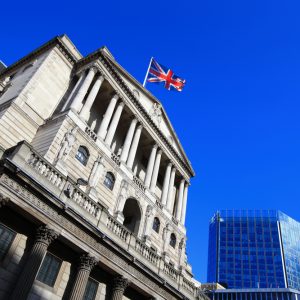
Last week, the Bank of England’s Monetary Policy Committee (MPC) raised the base rate to four per cent, the tenth consecutive increase. The move was widely expected and it took the rate to its highest level for more than 14 years. The last time it came close to this point was in October 2008, when it stood at 4.5 per cent.
And, according to a senior policymaker at the MPC, the likelihood is that there will be further increases to get soaring inflation under control.
Speaking in Budapest this morning, MPC member Catherine Mann noted that the Bank needed to ‘stay the course’, and that “the next step in bank rate is still more likely to be another hike than a cut or hold.”
She said: “If inflation indeed is more persistent, then bank rate will need to rise again after the pause, to be followed later with reversal.
“In my view, a tighten-stop-tighten-loosen policy boogie looks too much like fine-tuning to be good monetary policy. It is both hard to communicate and to transmit through markets to the real economy.”
Assessing the situation, she said that the Bank was “looking for a significant and sustained deceleration in higher frequency price increases and in the underlying inflation measures and expectations towards inflation rates that are consistent with achieving the two per cent.”
And she concluded: “Uncertainty around turning points should not motivate a wait-and-see approach, as the consequences of under tightening far outweigh, in my opinion, the alternative. We need to stay the course, and in my view, the next step in bank rate is still more likely to be another hike than a cut or hold.”
Agreement grows on future rises
While there were some who believed that base rate hikes may be at an end, the majority of economists now agree with Mann, although the majority feel that the uplifts are unlikely to be as steep as in the past few months.
Sanjay Raja, senior economist at Deutsche Bank, said: “Despite a 50 basis point (bps) hike to kick off the year, the MPC’s overwhelming message today was dovish.
“While not explicitly signalling a pause in the hiking cycle, the MPC has now put the onus on underlying inflationary data (i.e. services inflation, wage growth, and pay settlements) to keep rate hikes on the table going forward. Put differently, while the Bank stopped short of signalling an end to the hiking cycle, it has instead raised the bar for further rate hikes.
“[We see] the MPC hiking only once more by 25bps in March. We also now see risks tilted to further (modest) rate increases in H2 2023.”
Paul Dales, chief UK economist Capital Economics, feels that rates may rise higher but across two separate increases.
He said: “We still think that rates may rise to 4.5 per cent, but perhaps via two 25bps increases rather than one 50bps rise. Either way, we think that lingering domestic inflation pressures will force the Bank to keep interest rates at their peak for all of this year.”
Meanwhile, James Smith, developed markets economist at ING, feels there will be one more increase but, like Mann, notes that there are unlikely to be cuts anytime soon.
He said: “We expect the Bank to pivot back to a 25bp rate hike in March but that’s likely to be it.
“However unlike the Fed, it’s unlikely that the BoE will begin cutting rates later this year. The Bank’s chief economist, Huw Pill, recently noted that the UK has the worst bits of the US inflation story (structural labour shortages) and the eurozone (energy crisis), arguing that core inflation could stay stickier as a result. That’s a line we’re likely to hear a lot of over the coming months and suggests a rate cut is unlikely for at least a year.”
















